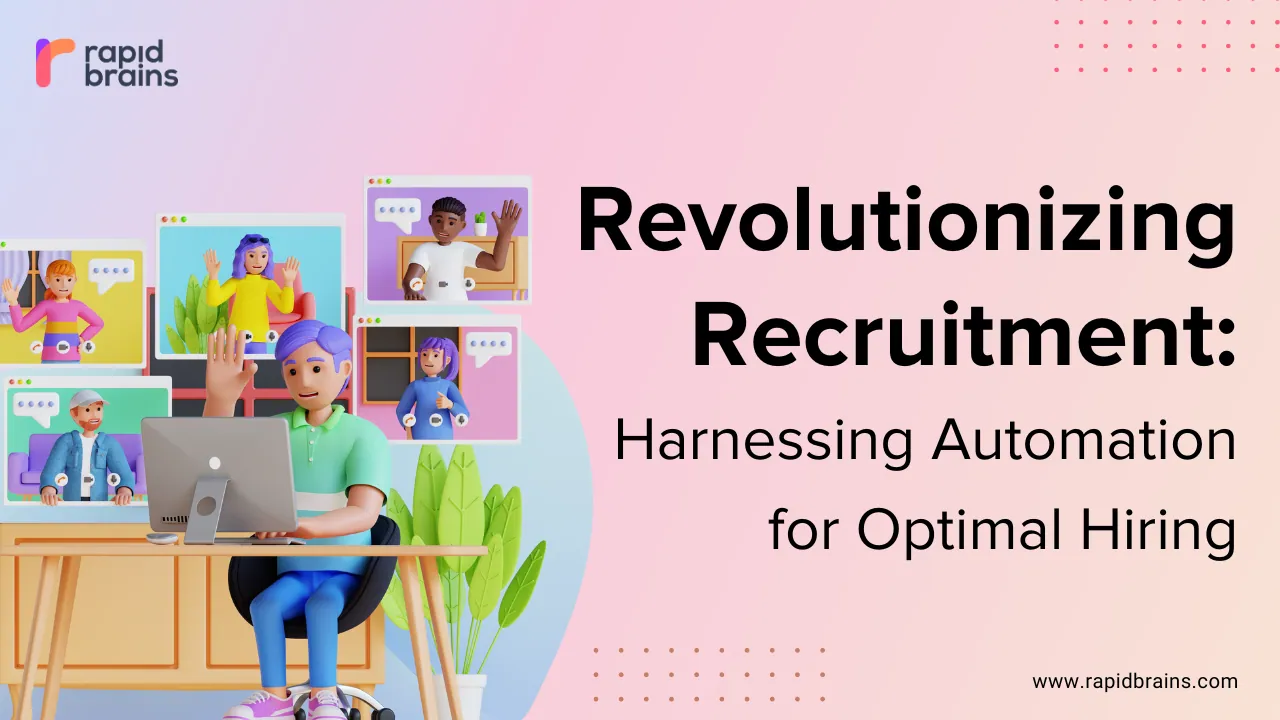
Introduction:
Efficient and effective recruitment processes are crucial for organizations to attract and hire top talent. Automation has emerged as a powerful tool in streamlining and optimizing recruitment processes. By leveraging technology, companies can enhance their candidate sourcing, screening, and decision-making processes, leading to improved efficiency and better hiring outcomes. In this blog, we will explore the benefits of automation in recruitment, discuss practical steps for implementing automation, address potential challenges, and highlight real-life case studies.
Benefits of Automation in Recruitment:
1. Time-saving and efficiency:
- Automated candidate sourcing and screening tools help identify qualified candidates quickly, reducing manual effort and saving time.
- Streamlined interview scheduling platforms automate the process of coordinating and confirming interviews, eliminating back-and-forth communication and improving efficiency.
- Automation accelerates the decision-making process by providing data-driven insights and facilitating collaboration among hiring teams.
2. Enhanced candidate experience:
- Automation allows for personalized and timely communication with candidates, providing updates and feedback throughout the hiring process.
- Automated candidate portals and self-service tools enable applicants to track their progress and access relevant information, enhancing their experience and engagement.
3. Data-driven decision making:
- Automation enables the collection and analysis of vast amounts of candidate data, providing valuable insights for making informed hiring decisions.
- Predictive analytics and machine learning algorithms can assess candidate fit based on historical data, improving the accuracy of candidate evaluation.
Implementing Automation in Recruitment Process:
Step 1: Assess your current recruitment process:
- Identify pain points, bottlenecks, and areas that could benefit from automation.
- Analyze data and metrics to understand where automation can add the most value.
Step 2: Identify areas for automation:
- Candidate sourcing, resume screening, interview scheduling, and follow-up communications are common areas to automate.
- Determine which tasks can be automated without compromising the human touch and candidate experience.
Step 3: Select the right automation tools:
- Research and evaluate automation platforms and software solutions that align with your organization’s needs and goals.
- Consider factors such as integration capabilities, scalability, user-friendliness, and vendor reputation.
Step 4: Integrate automation into your process:
- Seamlessly integrate automation tools with your existing applicant tracking system (ATS) and other HR software.
- Ensure smooth data flow and establish clear workflows to maximize the benefits of automation.
Step 5: Train your team on using automation effectively:
- Provide comprehensive training to recruiters and hiring managers to familiarize them with the new tools and processes.
- Emphasize the importance of data accuracy, privacy, and ethical use of automation technologies.
Overcoming Challenges and Considerations:
1. Data privacy and security:
- Ensure compliance with data protection regulations and implement robust security measures to safeguard candidate information.
2. Balancing automation and human touch:
- Maintain a balance between automation and personalized interactions to provide a positive candidate experience.
- Leverage automation for repetitive tasks, while reserving human involvement for critical decision-making and candidate engagement.
3. Ensuring fairness and avoiding bias:
- Regularly monitor and audit automated systems to identify and mitigate biases in candidate selection.
- Establish clear guidelines and protocols to ensure fairness and transparency throughout the recruitment process.
Future Trends in Automation and Recruitment:
1. AI-powered chatbots and virtual assistants:
- Chatbots can handle candidate inquiries, provide updates, and answer frequently asked questions, freeing up recruiters’ time.
- Virtual assistants can automate initial candidate screening, improving the efficiency of high-volume recruitment processes.
2. Robotic Process Automation (RPA):
- RPA automates repetitive and rule-based tasks, such as data entry and resume parsing, enabling recruiters to focus on higher-value activities.
3. Video interviewing and assessment tools:
- Video platforms facilitate remote interviews and assessments, enabling organizations to reach a wider pool of candidates and improve the efficiency of the selection process.
Conclusion:
Automation plays a pivotal role in optimizing the recruitment process, enabling organizations to save time, enhance the candidate experience, and make data-driven decisions. By following the practical steps outlined in this blog, companies can effectively implement automation and unlock its benefits. As recruitment technology continues to advance, organizations should stay informed about emerging trends and adapt their strategies to stay competitive in the evolving landscape.




